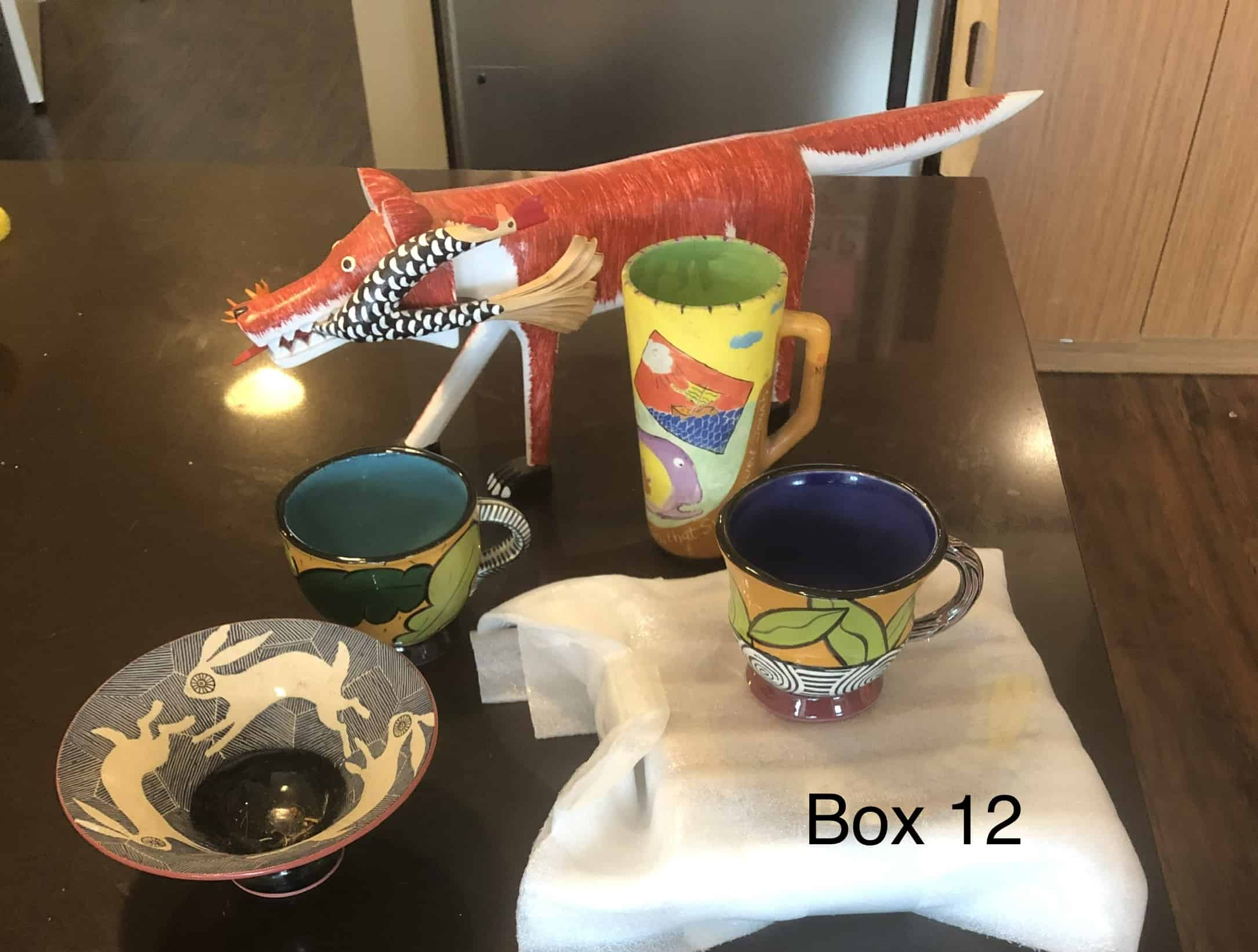Jump Ahead To:
Moving is a mix of emotions and tasks, but don’t let your valuable jewelry become an afterthought. Packing your jewelry with care ensures that every valuable piece from delicate pendants to hefty necklaces arrives intact and tangle-free at your new home. Here’s your comprehensive guide to packing jewelry with precision and peace of mind.
By the way, we’re Bellhop Movers, experts at moving across town and long-distance moves.
Understanding Jewelry Packing Needs
Before you start tossing your jewelry into a box, take a moment to see what you have. Your collection might include a mix of costume jewelry, beaded beauties, and valuable pieces, each requiring different handling. Delicate chains, for example, need more care to prevent tangling and damage than large beaded pieces. The first step is to organize your items by type—separating necklaces from pairs of earrings, and delicate items from more durable ones.
Creating an inventory might seem tedious, but it’s a lifesaver. It helps you keep track of what you have and ensures that each piece makes it to your new home. This list will also come in handy for insurance purposes and for setting up your new space.

Packing Supplies You’ll Need
To pack jewelry effectively, you’ll need more than just a few boxes if you don’t already have a jewelry box. Grab some essentials like soft tissue paper, packing paper, and bubble wrap for extra padding. Don’t forget plastic bags and sandwich bags for individual pieces.
Practical, Sustainable DIY Jewelry Packing Hacks
My daughter recommends a more sustainable approach, using DIY household items like toilet paper rolls and paper towel rolls to keep chains from tangling. Old sunglass cases are handy. Egg cartons are great for rings and earrings. A friend with lots of jewelry who crafts recommends 3M’s Washi Tape for securing necklaces to paper towels rolls. It’s a low-tack adhesive that peels off easy and leaves no sticky residue.
Our house gets a lot of package deliveries. Inside most boxes are those rolls of mini, puffed-air plastic bags called SealedAir. Keep the bags connected and scissor-open one side (near the connection). Ta-Da! A simple individual baggie for a necklace. Close with scotch tape and rollup. Then do it again.
Another great hack is to use plastic wrap to secure the contents of your jewelry box or to wrap delicate items individually. Lay-out a necklace, wrap with plastic wrap, then place in the SealedAir baggie. This helps maintain order and prevent scratches during the move.
Pre-Packing Organization
Start by sorting your jewelry. Pair up earrings and lay out necklaces to see what needs extra care. Use small ziploc bags, pill cases or egg cartons for smaller items like rings and pairs of earrings to keep them together. Tissue paper is better than heavy wrapping paper in some cases.
Next, group your jewelry by type and packing method. Keep delicate pieces separate from costume jewelry. Consider a special container for family heirlooms. By categorizing your items, you can determine the best packing strategy for each group before the movers arrive.
Jewelry Photography for a Move and Insurance
Since you are laying out all your jewelry, take advantage to setup and photograph your jewelry for insurance and personal records. If you are like most of us, you may not have a good record of what you own. Now is your chance! Here are some tips to ensure you capture high-quality images of your jewelry:
- Use a Neutral Background: Select a simple, neutral background for your photographs to ensure that your jewelry stands out with minimal distraction. A piece of plain cardboard or a gray card, which can be purchased from an art store, is ideal. These backgrounds help to accurately represent the color and detail of the jewelry without any color cast from colored backdrops. (Black backgrounds make jewelry pop, but can challenge your phone’s or camera’s exposure settings).
- Include Everyday Items for Scale: It’s important to show the size of the jewelry in your photographs. Place a universally recognizable item, such as a 25-cent quarter or a $1 dollar bill, or ruler next to your jewelry. This provides a scale reference that can convey the actual size. Without one, size is difficult to judge in photos alone.
- Include Paperwork Proving Ownership and Value: Next to the jewelry, lay out any paperwork that proves ownership and the value of the items. This includes receipts, appraisals, certificates of authenticity, and warranty documents. Photographed together links them clearly and indisputably for insurance or valuation purposes (and helps if you misplace the paperwork or lose it in a fire). include appraisals, certificates of authenticity, and warranty cards. Appraisals are particularly important for insurance purposes as they provide a recent market value for the items.
- Set the Phone / Camera to Keep Date Information: Ensure that the camera app or settings are configured to keep the date information on the photos. This metadata proves when the photographs were taken, which is essential in documenting the pre-move condition of your jewelry.
How to Keep Necklaces from Tangling When Moving
Packing necklaces for a move can be tricky due to their propensity to tangle, but with the right approach, you can ensure they arrive at your new home knot-free and in perfect condition. Start by gathering necessary supplies: plastic wrap, tissue paper, toilet paper rolls, ziploc bags, and bubble wrap. Each of these materials plays a crucial role in protecting your necklaces during the move.
The first step is to lay each necklace on a flat surface and straighten it out completely.
For a DIY solution, use drinking straws for thin chains. Cut the straws to the length of the necklace, thread the chain through the straw, and fasten the clasp or secure the ends sticking out of the straw with a small piece of tape to keep them from sliding back inside.
Alternatively, lay each necklace on a small sheet of kitchen plastic wrap, fold over and press around the necklace to seal it up neatly.
For thicker or more ornate necklaces, wrap them individually in plastic wrap or around toilet paper rolls. Lay the necklace on a sheet of plastic wrap, fold the wrap over, and then roll it up tightly. Either method keeps your necklace tangle-free.
Alternatively, use a jewelry roll for transportation. A jewelry roll is a fabric strip with pockets and straps that can hold multiple necklaces and keep them from tangling. Rolling your necklaces carefully and securing them can also help maintain their shape.
After your necklaces are secured, place them in a small box layered with bubble wrap or foam. Use dividers or extra bubble wrap as a cushion between them.
Label the box clearly and keep it with you during the move if possible. This reduces the risk of loss and damage.
Packing a Layered Necklace for Moving
Layered necklaces can be especially challenging to pack due to their multiple strands and increased potential for tangling. To pack these delicately, you’ll need to secure each individual strand. One effective method is to cut small lengths of plastic drinking straws and thread each strand through a separate straw. This method isolates each layer and keeps it straight, significantly reducing the risk of tangling. Alternatively, take a piece of cardboard and cut 1-inch grooves on either side and place each strand in the grooves on each side.
Packing Bracelets and Watches for Moving
Bracelets and watches can be easier to handle, but they still require care. Use bubble wrap or foam sheets to wrap each piece individually, then place them in a small box or jewelry roll or roll of SealedAir baggies. Securing the clasps of your bracelets can also prevent them from catching on other items.
Packing Earrings and Rings for Moving
To pack pairs of earrings, use a pill case or a small box lined with cotton. This prevents them from moving around and getting lost. Rings can be kept safe in egg cartons or sandwich bags with a little padding from tissue paper.
Using a Jewelry Box for Moving
If you have a jewelry box, it’s perfect for moving most of your pieces. To pack your jewelry box, start by padding the bottom with tissue paper or wrapping paper. Those bubble wrap shipping envelopes from Amazon are usefull too. Place the heaviest items on the bottom and layer lighter pieces on top, separating layers with more tissue paper or foam. Secure the box with packing tape to ensure nothing opens during the move. Write your name or some code in your script handwriting across the tape as an added precaution.
Do You Need Jewelry Insurance While Moving?
Moving can be risky for your precious jewelry, making insurance a useful consideration. You might already have homeowners or renters insurance, but it’s important to check whether these policies cover your items while they are being moved.
Many insurance policies require a detailed inventory and valuation of insured items, particularly for high-value items like jewelry. Consider purchasing a supplemental moving insurance or a floater to your existing policy that specifically covers your jewelry. Contact your insurance provider to discuss your options and to understand the coverage limits and deductibles.
Make sure to read the fine print of any insurance policy. Some policies may not cover items packed by the owner (PBO), insisting instead that professional movers pack your valuables to ensure they are covered. If you are using a moving company, ask about their insurance coverage options for high-value items and whether additional coverage is recommended.
Preparing for Moving Day
On moving day, keep your jewelry with you if possible. Use a carry-on bag or a personal safe for items you’re particularly worried about. Before the movers arrive, double-check that everything is packed securely and labeled properly. You will be busy on moving day and it’s easy for a marked box to disappear. Consider locking the jewelry box in the trunk of your car while movers are busy.
Unpacking Your Jewelry
Unpacking might be the last step, but it’s just as important. Unpack your jewelry individually, checking each piece for damage. Start with the largest items and work your way to the smallest, taking care to reorganize as you go.
Check against your inventory list to ensure all arrived. If the jewelry box is missing or opened, it’s important to make a claim while the movers are still present.
How to Untangle Necklaces After Moving
Untangling necklaces can be a frustrating chore, especially after a move when you just want to get settled. However, with patience and the right technique, you can restore order to your jewelry collection. Start by laying the tangled necklaces on a flat surface like a table or a velvet board, which provides a non-slip backdrop.
Sprinkle a little baby powder or talcum powder on the knots if the tangles are tight. This can reduce friction and make the chains easier to work with. Using two fine pins or needles, gently tease out the knots. Work slowly and avoid pulling too hard, which might break the chain.
Sometimes, using a little bit of oil (like olive or baby oil) can help loosen the knots. Apply a small drop directly on the knot, and then use the pins to gently separate the links. Once untangled, clean the necklace to remove any oil residue which could attract dirt or cause the metal to tarnish.
If the knot is particularly stubborn, it might be helpful to soak the necklace in warm soapy water for a few minutes. This can soften the metal slightly, making it easier to work with. After untangling, rinse the necklace thoroughly in clean water and dry it carefully with a soft cloth.
How to Get a Knot Out of a Necklace
Removing a knot from a necklace requires a gentle touch and a bit of patience. Place the necklace on a flat surface with good lighting—a magnifying glass can help you see small links more clearly. Using two fine sewing needles, gently poke and prod at the center of the knot. The idea is to loosen it enough so that you can begin to pull the tightest loops apart.
Applying a small amount of lubricant, such as baby oil, can also facilitate this process. The oil helps the metal links slide past each other more easily. Once the knot has been loosened, continue to work the links apart with the needles, and pull the chain through the loosened loops until the knot is undone.
When You are Ready for the Big Move, Use Bellhop
At Bellhop, there’s nothing we want more than for our customers to have a smooth move. this guide makes you feel better about packing your jewelry. If you’re ready to get moving, or have more questions, our local and long-distance movers would love to help.
- How to Pack Lamps for Moving - July 15, 2024
- How to Pack Chairs for Moving - July 9, 2024
- Best Moving Companies in Atlanta - June 26, 2024




